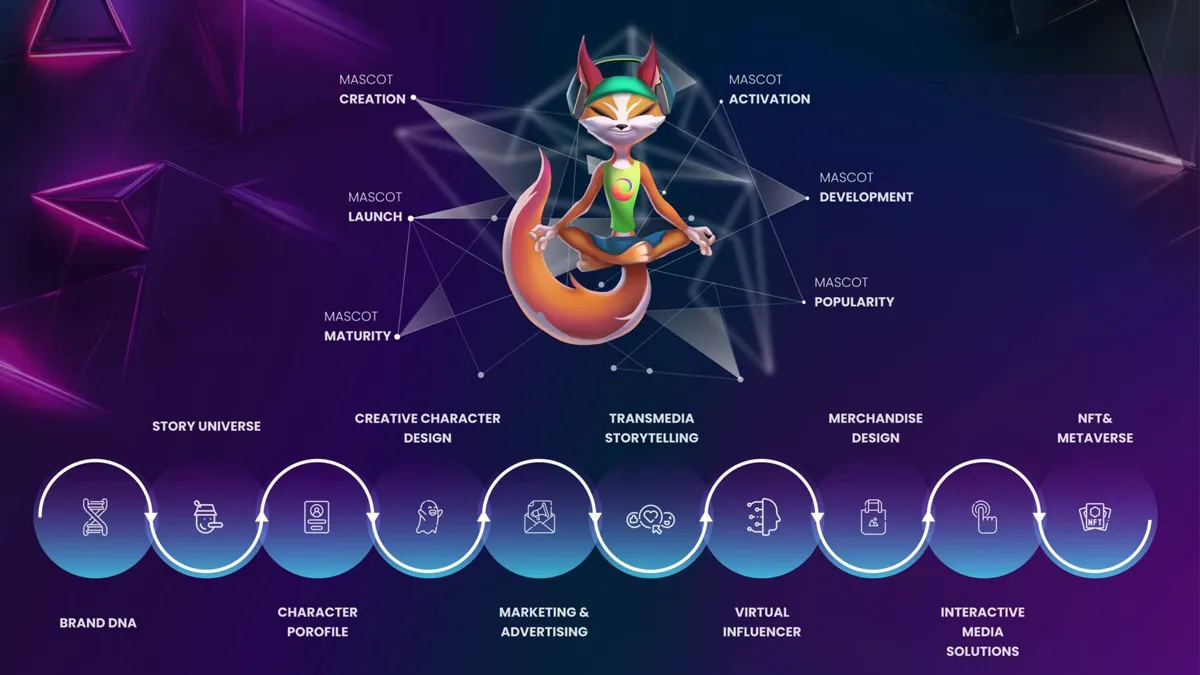
Why do brand mascots matter?
Why do marketers still believe in them?
No matter if they are illustrated characters, animals, robots, or even objects, mascots are more than just a cute addition to logos – they are a strategic tool that brings your brand to life.
Brands with recognizable mascots see up to a 41% increase in market share due to enhanced customer recall. A 2021 study by Campaign reported that.
Interestingly, the study also reported that campaigns featuring characters can boost profit margins by 34.1%, compared to those without characters (26.2%.).
Per the said article, the acquisition of new customers tends to rise by an average of 40.9% in campaigns with characters, compared to just 32% for campaigns lacking this element.
If well-developed, they can represent a brand’s personality and values on another level, which eventually creates a strong emotional connection with the audience.
Yes, emotional connection; we all know how crucial it is for success.
In addition,
With AI and digital tech on the rise, having a mascot is becoming even more essential.
First, they can easily adapt to various digital platforms.
Second, they boost your brand’s visibility in a crowded online space, capturing attention quickly.
Third, they can create memorable experiences, encouraging shares and engagement on social media.
Finally, they foster a sense of community, making consumers feel more connected to the brand.
If you’re doubting if mascots are worth it, this article is for you.
Keep reading to see how these lovable iconic characters give your brand a unique voice.
What is a Brand Mascot?
Here’s a more dictionary-like definition:
Also known as a trade character, it is a visual and symbolic representation of a brand.
Now, let’s see what they mean in business.
Mascots are categorized as a form of brand character.
Companies leverage them as powerful assets to promote their products and services across diverse advertising channels.
These fictional characters are strong at bringing versatility to brand promotion, as they can simply adapt to different formats and maximize engagement potential.
Through social media, commercials, packaging, and even interactive digital experiences, these icons create memorable touchpoints.
This will eventually help your brand reinforce its identity and better connect with your audiences.
You may find it interesting that brand mascots aren’t new to marketing; they’ve been around since 1894.
For decades, brands have been exploring ways to make buzzes in the business words with the help of these popular iconic characters.
The Evolution of Mascots: From Michelin Man to AI-Driven Icons
As Campaign reported, in 1992, 41% of advertising campaigns incorporated a character or a recurring theme.
One of the earliest examples is the iconic Michelin Man, which was introduced by Michelin Tires in 1894. Then, San Diego Chicken (1974), Phil the Pill (1960s), and Mickey Mouse (1928) rolled onto the scene.
And the list has been going on til today.
Make sure to check out our comprehensive article featuring 35 of the most iconic mascots.
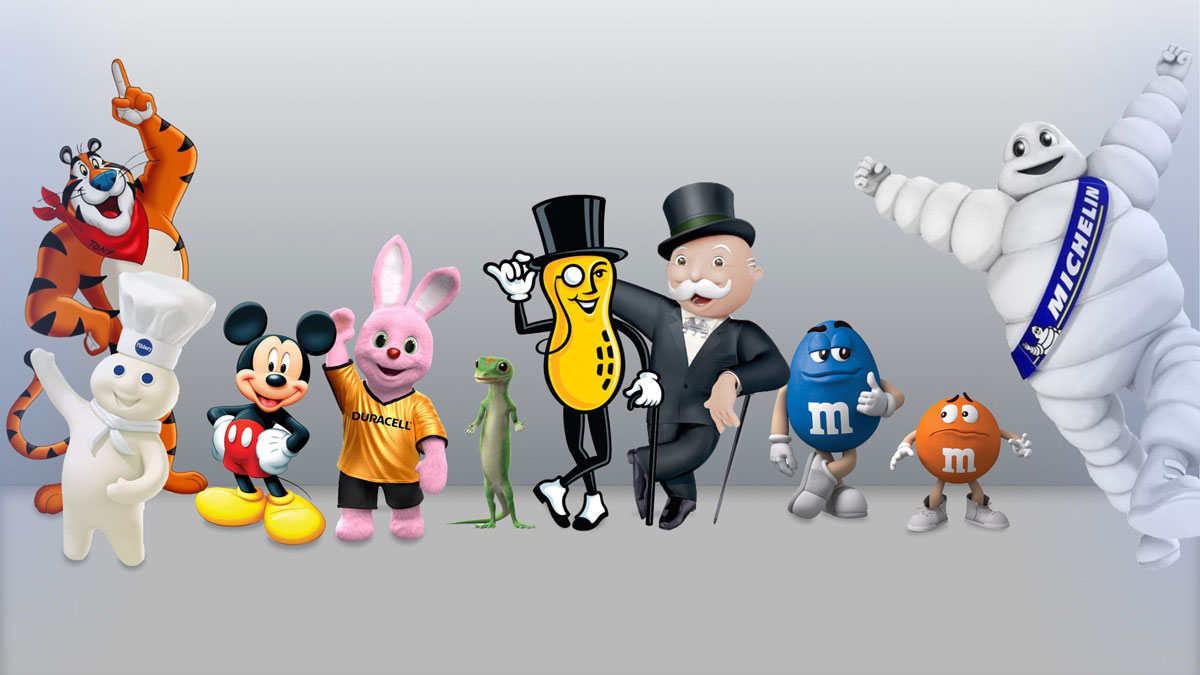
So, even back then, brands were using simple mascot illustrations to make their print advertising unique and eye-catching.
Over the decades though, the reach of mascots has expanded significantly.
These simple visuals have evolved dramatically, as they moved beyond print to appear on websites, in mobile apps, across every media platform, and even into the immersive realms of virtual reality.

Thanks to technology advancement, these iconic characters are no longer just static symbols; they are dynamic entities that can leverage Artificial Intelligence (AI) and Augmented Reality (AR) to engage audiences in fresh ways.
Louis Vuitton’s Vivienne and UEFA’s Meet the Women’s EURO 2022 mascots are recent examples.
Through AR, mascots can come to life in users’ environments via smartphones or AR glasses, allowing fans to engage with them in immersive and interactive ways.
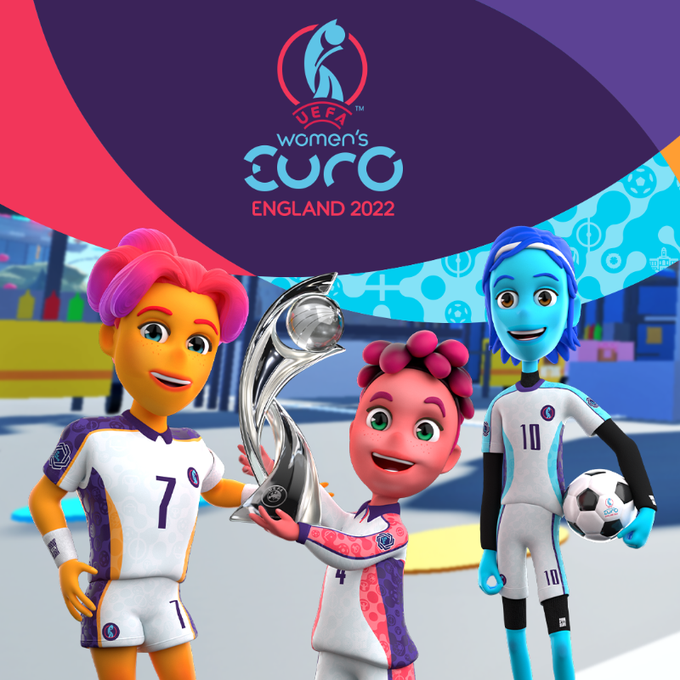
Duo, a character from Duolingo, is another example of a well-developed interactive persona that could attract 116.7 million users by the end of 2024 through gamification, according to a report from Statista.
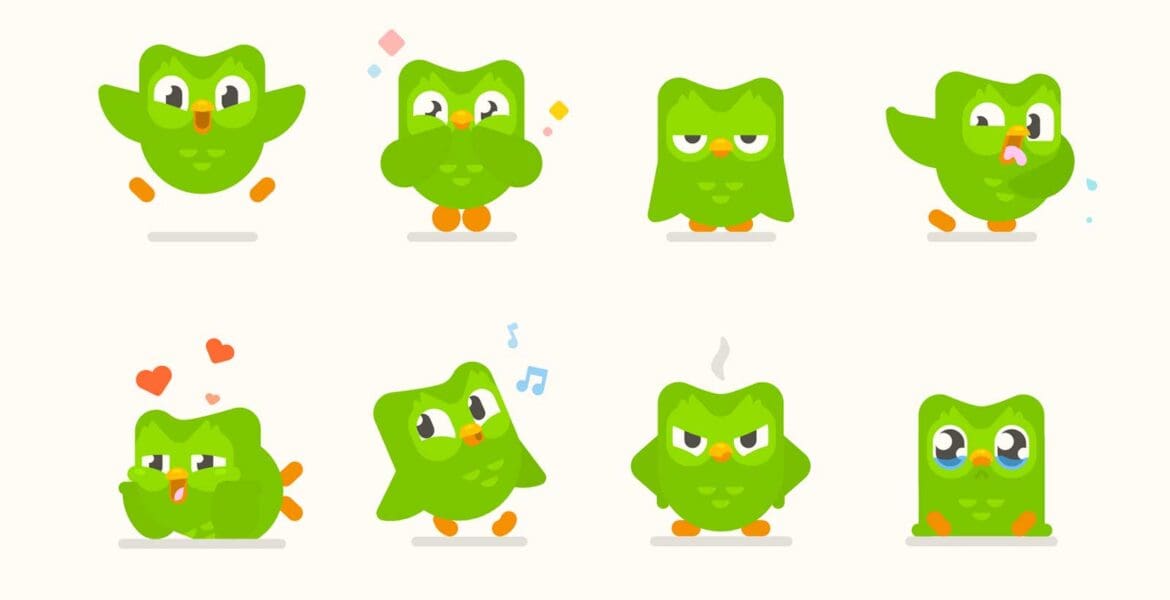
Do Brand Mascots Really Work?
Before answering the question, let us ask you another question?
Why do renowned brands like Pillsbury, M&M’s, KFC, Coca Cola and many other big names invest in mascots?
Isn’t it because they make a difference?

And here’s 5 ways they help your brand thrive:
First, iconic mascot characters evoke warmth and trust and foster loyalty.
Second, approachable and easy-to-recognize mascots increase brand recall and recognition.
Third, they help you distill complex ideas into relatable stories.
Fourth, they create a buzz across platforms, from social media to packaging.
Fifth, they give brands a personality customers can relate to.
When you think about all the amazing things a mascot can bring to the table, you might have one key question:
“How can I create a mascot and effectively benefit from it?”
If you’re thinking about adding a mascot to your communication plan, our team is here to help.
With over 10 years of experience and the development of more than 2,500 characters, we’ll guide you through every step to unlock the full potential of your new team member!
Learn more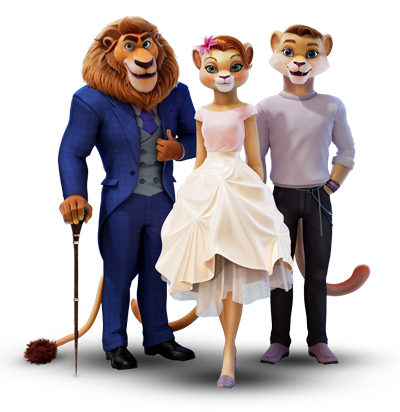
How to Create a Brand Mascot?
It’s great that more brands are seeing the value in having a mascot. However, many don’t fully consider what makes a mascot successful.
Every day, countless new mascots are created, but many of them end up just being stickers on the wall, forgotten after a short while.
It’s not uncommon for clients to come to us with a spark of inspiration for their potential mascot – a sudden flash of creativity.
Sometimes, it’s the CEO’s beloved pet or a cute creature spotted by the branding manager on Pinterest!
They’re captivated by these initial ideas, convinced they’ve found the perfect representation for their brand.
However, before initiating any mascot-related activity, it’s important to look at the right process of creating a mascot.
Why?
Becuase there’s more to it than just picking something that looks good; it’s about making sure the mascot fits PERFECTLY & ETERNALLY with what the brand stands for.
So, let’s start by understanding the difference.
Mascot Development vs Character Design: What’s the Difference and Why It Matters
Not every character is a mascot.
A mascot embodies a brand’s identity and values, like the Michelin Man, who represents durability and innovation.
In contrast, a brand character, like the Marlboro Man, may support specific campaigns without defining the brand.
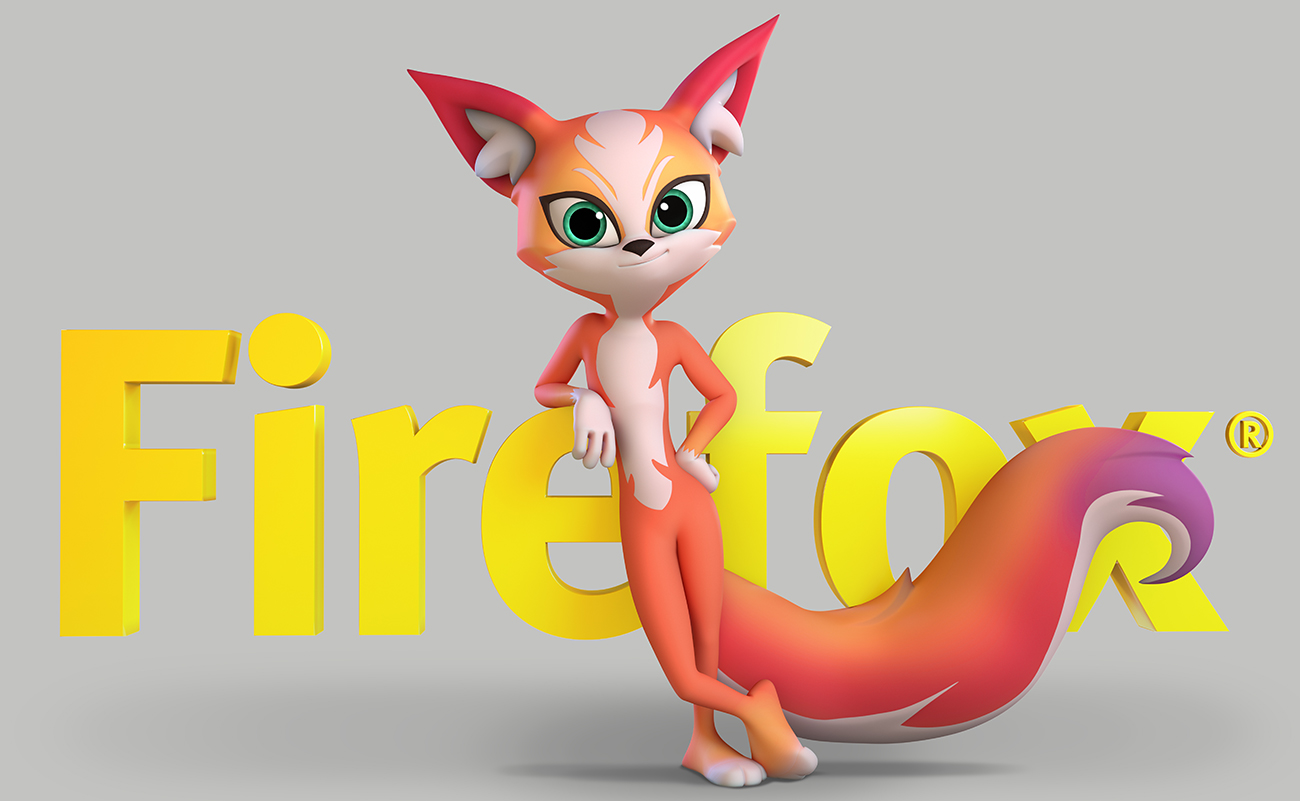
Brands often think getting a mascot is hiring a character designer, asking for a design, and calling it done.
However, this simplified view overlooks the comprehensive and strategic process necessary for a successful mascot application.
Beyond just creating a visually pretty character, effective mascot creation involves aligning the character with the brand’s identity, personality, mission, industry, goals, marketing strategies, and communication channels.
Without this foundation, brands may end up with a nice image that fails to represent the values of the brand, diminishing its potential impact and effectiveness.

Within the process of mascot development, the role of a “designer” is specifically focused.
It does not include any decision-making regarding the mascot’s fundamental characteristics. This includes whether it should be a creature or an animal, its style, shape, or color theme.
The designer does not provide input on the potential uses or limitations of the mascot. Instead, their task is limited to creating a visual based on a comprehensive brief.
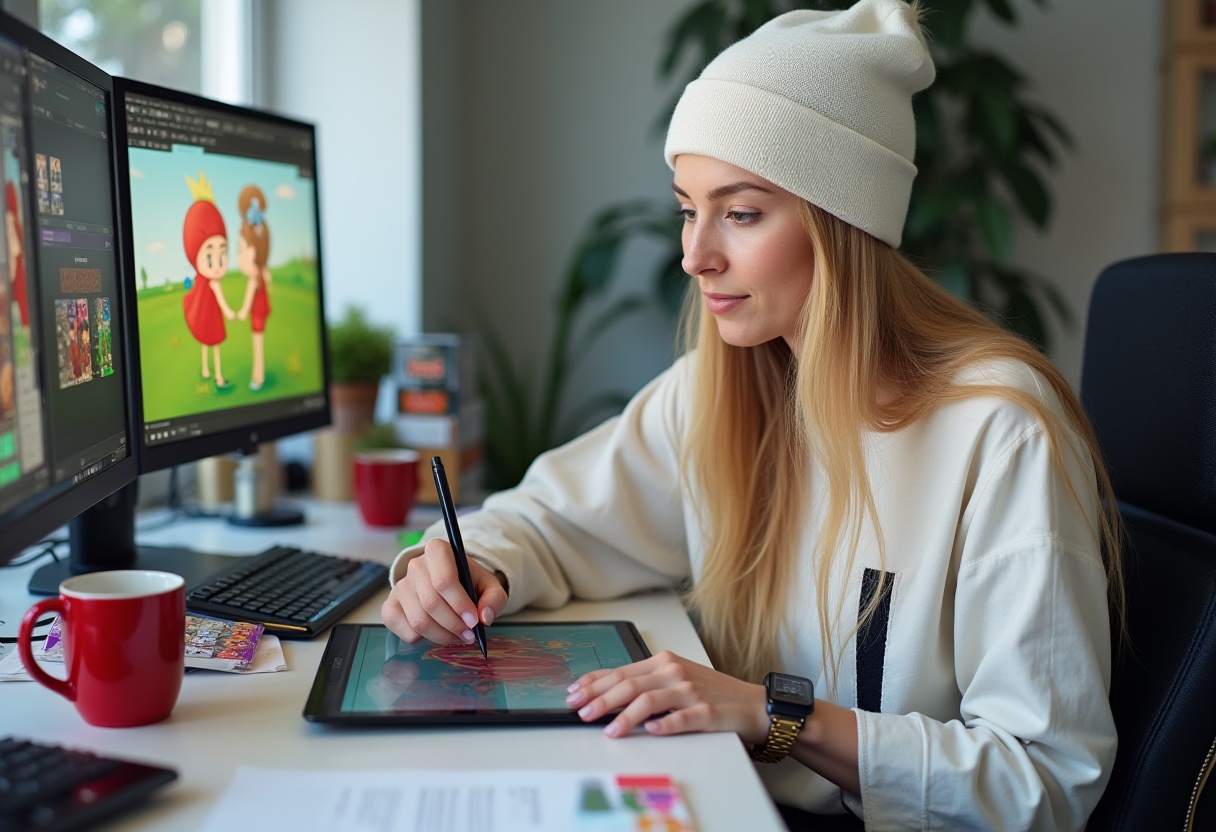
The selection of the designer itself is heavily influenced by the brief’s requirements.
For instance, when creating a mascot intended to engage with an East Asian audience, the choice may not fall on a German character designer, regardless of how professional and reputable they might be.
The importance of cultural familiarity is paramount.
The designer must understand the cultural context of the mascot’s origin. They should also know what would be considered appropriate and appealing within that community.
This understanding is crucial to ensure the mascot connects deeply and appropriately with the intended audience.
Why Dream Farm Chose Brand Mascot Total Solution Path
Due to our extensive experience in animation and character design, we frequently encounter inquiries for mascot development projects.
This demand highlights the importance of character-driven marketing in today’s competitive landscape.
Our expertise allows us to understand clients’ pain points and address them efficiently. We develop characters that represent the brand’s identity and values.
Character design is a crucial step, as well-designed mascots significantly enhance your brand recognition and leave a lasting positive impression on your audience.
To achieve that, we collaborate closely with our clients throughout the creative process, from concept development to final execution.
By leveraging our knowledge of animation and character design, we deliver mascots that not only capture attention but also create lasting emotional connections with consumers.
The traditional belief that 3D animation studios are ideally suited for creating mascots meant that we often found ourselves at the crossroads of these demands.
Over ten years in the animation industry taught us that while these projects were in our wheelhouse, they also revealed a significant gap in the market.
We observed that even the most recognized marketing and communications agencies often lacked critical expertise in visual storytelling and character complexity.
While these agencies might have mastered the art of marketing and strategy, translating these skills into the world of animated characters and visuals seemed to be challenging.
This gap showed that there’s a big difference between knowing how to market and understanding how to tell stories with characters and visuals.
This is where we found a special edge. Our initial projects unintentionally led to an organic collaboration between our studio’s creative team and our marketing and strategy experts.
This synergy after a while revealed the value of combining these fields, which eventually gave birth to our brand mascot design total solution approach.
By integrating our artistic vision with strategic insight and technological innovation, we recognized that we could offer a uniquely effective service.
This integrated approach has become our niche, and we decided to make this our main thing. Now, Dream Farm doesn’t just create great-looking characters.
We also make sure they fit perfectly with what the brands need and are capable of future success, thanks to an A-Z approach that blends creativity, strategy, and tech.
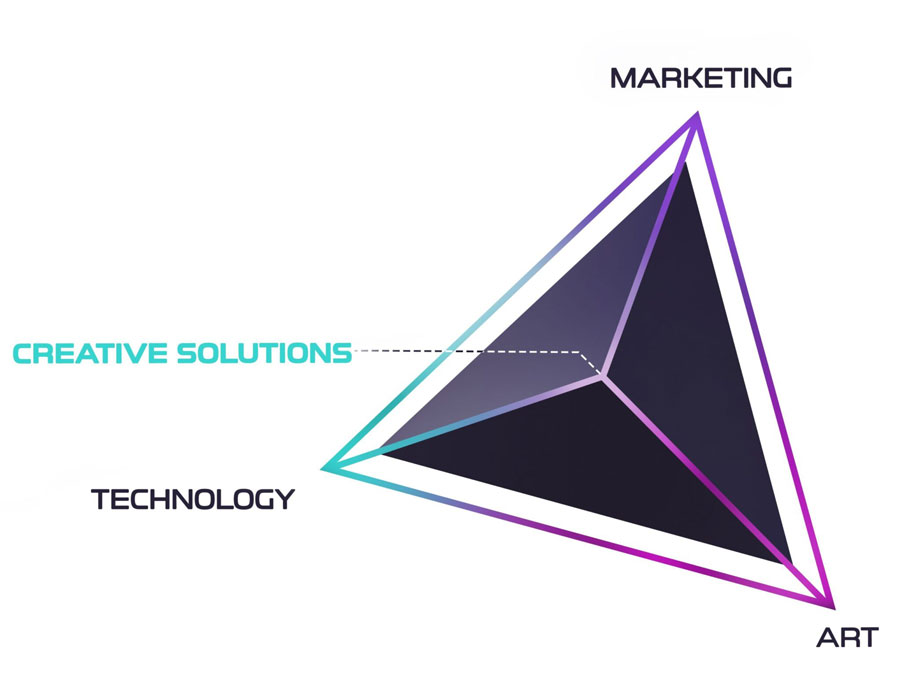
Roadmap to Mascot Development
Creating a mascot requires strategy.
Our brand mascot total solution spans the entire journey, from the initial brand research and development phase to designing the mascot.
Once your character is built, we create mascot-driven content, and strategize its application across both the physical and digital worlds.

Although we present these phases as a sequential process, the order can always change depending on the industry and specific business goals.
How?
For example, in the case of a theme park mascot, aspects such as interactive media solutions, mascot-based events, and merchandise might take priority, given their significant impact on the theme park’s success.
This flexibility ensures meeting the unique needs and priorities of any brand.
Steps to Develop a Brand Mascot
Step One: Shaping Brand DNA
Starting with thorough brand research is crucial before creating a representative character. This initial step involves a deep understanding of the brand.
It’s like laying a strong foundation before building a house.
During this phase, we figure out what the brand stands for, what makes it special, who it’s trying to reach, and what feelings it wants to stir in its customers.
We also look at what other brands are doing and what people like or don’t like.
Knowing all this is super important because it helps make sure that the character we come up with fits the brand perfectly.
It’s like making sure the clothes fit just right.
Skipping this step risks creating a character that fails to represent the brand or resonate with customers.
Understanding the brand first sets the stage for a character that truly embodies its story.
Step Two: Creating a Story Universe

Creating a whole world around a character helps make it more real and easier for people to connect with.
Imagine knowing where the character comes from, who its family is, and what it was doing before we met it in the brand’s social media.
This background makes the character feel alive and gives it a sense of history and depth.
It’s like when you learn about a new friend’s life story – you understand them better and feel closer to them.
It’s about feeling like the character belongs to a world we can imagine and care about, making the audience more attached and interested in what happens to them.
This is also a great opportunity for the brand to mix its core ideas into the character’s world.
By adding what the brand believes in and its messages into the character’s journeys and where they happen, the brand gets to share its values in a fun and engaging way, without outright telling people to buy something.
Step Three: Creating a Character Profile
The process of creating a mascot’s profile and personality goes beyond just its looks; it’s about defining the unique traits that make them memorable:
- Are they funny or serious?
- Do they speak fast or slow?
- Are they relaxed or particular?
- Does it have human traits or lean more towards the animalistic side?
- Are we envisioning a youthful, teenager-like persona or a more mature, adult character?
- Maybe they even have a special super-power!
These characteristics aren’t random; they should be carefully picked to align with the brand’s identity and appeal directly to the target demographic.
ust as friendships in the real world are formed through shared laughter, mutual interests, or a spark of connection, our aim is to develop a similar bond between the mascot and its audience.
This is our opportunity to create a personality that everyone loves and wants to be friends with!
Step Four: Creative Character Design
Once we have all the details about the character neatly outlined in a brief, the exciting design phase begins.
We often select multiple designers, sometimes as many as three, for a single project to ensure a variety of creative ideas.
This kicks off with several rounds of sketching, during which we closely collaborate with the brand, incorporating their feedback to refine the concepts.
After a few iterations, we settled on an approved 2D design. From there, it’s all about adding the final touches and then moving on to the modeling stage.
This is where the character truly comes to life, evolving into a fully rigged 3D model complete with a range of facial expressions and diverse poses, resulting in a perfectly crafted character ready to make its mark.
Your Mascot is Ready!
Now, How Do You Use It in Marketing?
So, now you’ve got a character that’s perfectly aligned with your brand, complete with a rich background and story. But what’s next? The “baby” is born, and now it’s time to nurture it and help it grow into a successful persona! But how?
Questions arise:
How should it speak? What should it do? Where should it appear? Are there limitations? Absolutely—there need to be boundaries to ensure it stays consistent and effective.
This essential document covers everything about the character.
It maps out the mascot’s purpose within the brand, pinpoints the intended audience, and brings the mascot’s backstory, personality, message, tone, and visual identity to light and to be safe for lasting usage.
(Especially ideal for big organizations with frequent changes in marketing and branding teams.)
While working on the mascot enhancement project for Wyndham Hotels & Resorts, specifically the Sleepy Bear for Travelodge, we made an interesting discovery: this mascot has been in existence for over 50 years.
Yet, when we were contacted by the current Marketing and Branding Director, who has been with the team for about 6 years, neither she nor any other member of the current team was fully aware of the mascot’s extensive history.
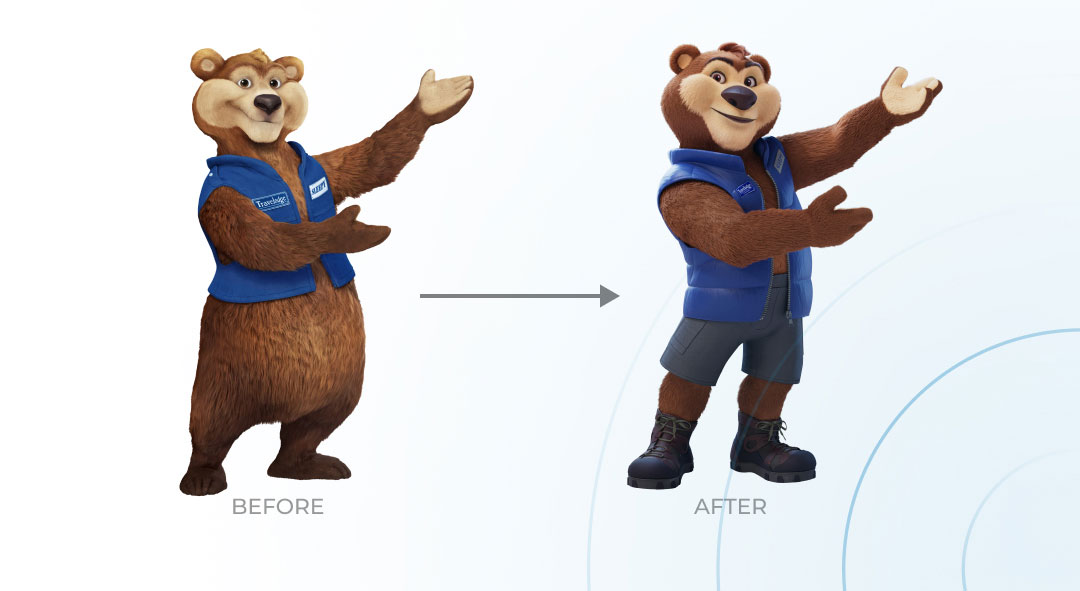
Over the years, Sleepy Bear has been redesigned and repurposed repeatedly, without any guiding documentation.
Recognizing this gap, we compiled all the necessary information and created a comprehensive and consistent backstory for Sleepy Bear. We then provided the team with a detailed guide to ensure Sleepy Bear’s legacy would be preserved and respected moving forward.
The guideline lays out the do’s and don’ts for depicting and using the mascot, setting clear boundaries to preserve its identity. It discusses the mascot’s limitations, suitable promotional channels, and strategies for impactful communication.
By equipping with this guide, the brand can have a vision for the mascot’s journey.
A critical milestone in a mascot’s life cycle is the “mascot launch“, in which we will provide the brand with customized strategic solutions designed to embed our mascot in the hearts and minds of the audience.
A solid long-term plan will also ensure the mascot not only makes a strong initial impact but also remains memorable and effective over time.
Once your creative design is finalized, the next critical step is to protect your new brand asset. We highly recommend following our legal guide to trademarking a mascot to ensure your intellectual property is secure.
Storytelling with Mascots: How To Elevate Your Brand Narratives
Think about it: Do you buy a washing machine simply because it cleans clothes, or do you buy the promise of a cleaner, more efficient home life?
Do you choose a particular brand of sneakers because of their technical specifications, or because they represent a certain image or lifestyle?
Well, people don’t buy products.
They buy stories.
While features and functionality are important, people are often drawn to the stories that accompany products.
These stories can evoke emotions, aspirations, and a sense of connection, making the product more than just a collection of materials and functions.
Now, the key to making a brand truly shine isn’t just in having mascots; it’s in how they can be used to tell stories.
Brand mascots have the unique power to transform brand storytelling, simplifying complex messages and making even the driest information fun and relatable.
They offer consistency across various marketing platforms, from social media and websites to advertisements, events, and packaging. This consistent presence helps in building brand recognition and loyalty.
For example, a mascot can star in a series of stories or adventures that highlight different aspects of the brand, such as its commitment to quality, its history, or how its products or services can solve problems.
Picture this:
starting with mysterious hints about the mascot on social media, leading to a big reveal on the brand’s website, inviting the audience to join the YouTube channel for a surprise.
Next, an animated series on YouTube would introduce the mascot’s backstory, followed by a game with each level cleverly revealing clues about a forthcoming physical event featuring the mascot.
This approach keeps the audience hooked across different channels, eagerly awaiting what comes next.
And this is the power of Transmedia storytelling.
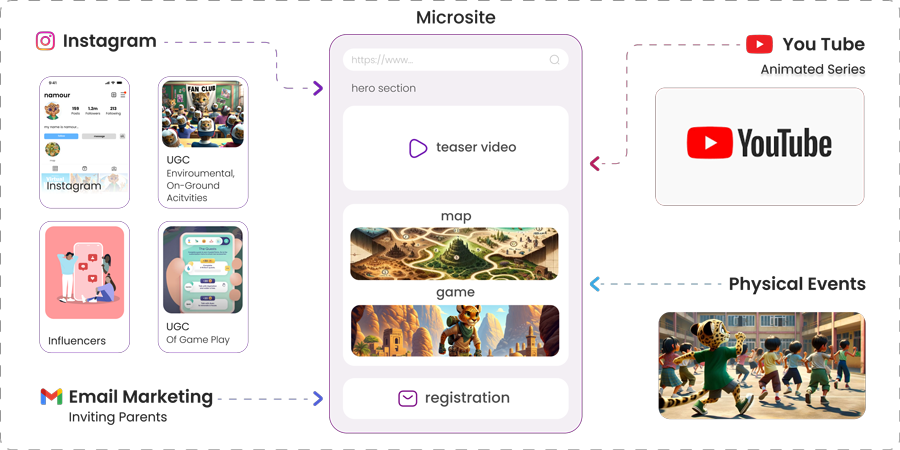
Moreover, a well-designed mascot can cross cultural and linguistic barriers, appealing to a global audience. It can embody universal values and emotions, making the brand’s story accessible to people from different backgrounds.
In the digital age, mascots can also interact with the audience in real-time on social media, as brand virtual influencers, providing a dynamic and engaging way to participate in conversations, celebrate milestones, and respond to current events, all while reinforcing the brand’s identity and values.
Merchandise, Interactive Media Solutions, NFT & Metaverse
Also, once your brand mascot becomes popular with your audience, it opens up a world of opportunities, from directly selling your product and service to realizing your merchandising ambitions.
We develop your character with these goals in mind, ensuring future success in the marketplace.
To make your mascot even more engaging, we utilize immersive, tech-based solutions, bringing your character to life in a digital environment.
This often involves designing mascots for augmented reality (AR) and virtual reality (VR), using these immersive technologies to significantly boost customer engagement.
NFT collections, including a wide range of 2D or 3D characters, backgrounds, and accessories, are another way of utilizing the mascot in the digital world.
Furthermore, your mascot serves as the ideal ambassador for venturing into the metaverse, providing a humanized representation of your brand.
There are countless more opportunities and even more on the horizon, thanks to the rapid pace of the digital world.
And what better tool to leverage these possibilities than a mascot?
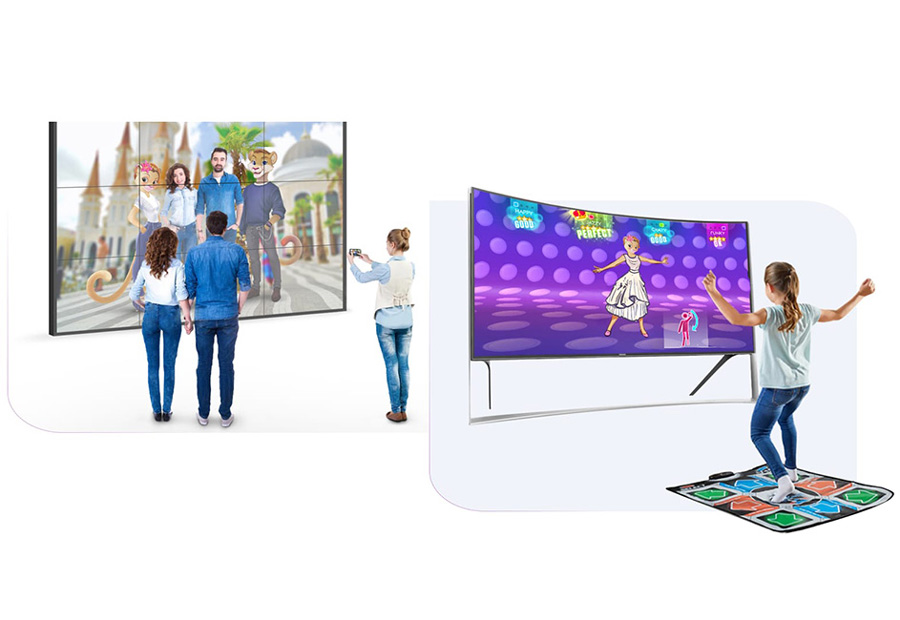
Is a Mascot Really Worth the Investment? Let’s Break It Down
So, we’ve covered it all, and it’s clear that mascot development isn’t a quick, overnight process.
It often takes time to land on the right design, and then comes the long-term strategy to build its popularity. Some might wonder, why go through all this effort?
The answer: because it’s absolutely worth it.
Once you start viewing a mascot as a long-term investment, you’ll see the incredible benefits it brings. Let’s look at some powerful stats:
- Long-term campaigns featuring mascots can boost profit gains by up to 34.1%.
- Brands that use mascots in their marketing attract up to 40.9% more new customers compared to those without.
- Mascots increase brand recall, with a 30% higher likelihood of being remembered than traditional logos or symbols.
- They even help achieve a 10-15% increase in click-through rates (CTR) on social media ads compared to non-character-driven content.
These numbers speak for themselves. When developed with a solid strategy, mascots can connect with audiences on a personal level, strengthening brand loyalty and recognition.
A mascot adds a unique, consistent presence across marketing channels—whether it’s social media, packaging, or live events- helping your brand truly stand out in a crowded market.
While mascot creation requires thoughtful planning and investment, the payoff in brand visibility, customer engagement, and long-term loyalty is substantial.
These benefits are not limited to consumer brands; in fact, using mascots for B2B companies can be a powerful strategy to humanize complex services and build lasting client relationships
Wrapping it up…
Given the initial investment and costs involved in developing a character, making the most of this opportunity is essential, rather than risking failure through a hasty and unplanned approach.
If you’re considering adding a mascot to your brand, simply reach out to our team.
We’ll guide you through the entire process, starting with whether a mascot is even the right choice for your brand.
If it is, we’ll help you find the most cost-effective way to get started and show you how to make the most of it.
Explore More About Brand Mascots
- Should Companies Have a Mascot
- Brand Mascots in Marketing
- Brand Mascots Help Businesses
- Brand Mascots Startups Success
- Mascot Ideas for Businesses and Brands
- Before Creating Your Mascot
- What Is Brand Character
- Brand Character vs Personality
- Brand Character in Marketing
- Backstory and Character Profiles in Brand Mascot
- How to Choose a Brand Mascot Name
- Emotion in Mascot
- Popular Brand Mascots
- Sports Mascots
- B2b vs B2c Mascots
- Ip Characters
- Brand Ambassadorship Complete Overview
- Role of AR VR Bringing Brand Mascots Life
- AR VR Bringing Mascots in Marketing
- Interactive Mascot
- History Future AR VR Brand Mascots
- Virtual Mascots
- Mascots Merchandise Capitalizing Popularity
- What Is a Brand Mascot Book
- How to Update a Brand Mascot
- Comprehensive Guide to Animated Mascot Campaigns
- Storyworld 7 Worldbuilding Tips
- Namours Adventures
- How Theme Parks Mascots Are Changing
- Game Changer for Theme Parks
- Theme Park Advertising Strategy
- Historical Evolution of Brand Mascots: From Static Figures to Dynamic Personalities

DaveFounder & CEO - Dream Farm Agency

NancyCommunication Manager
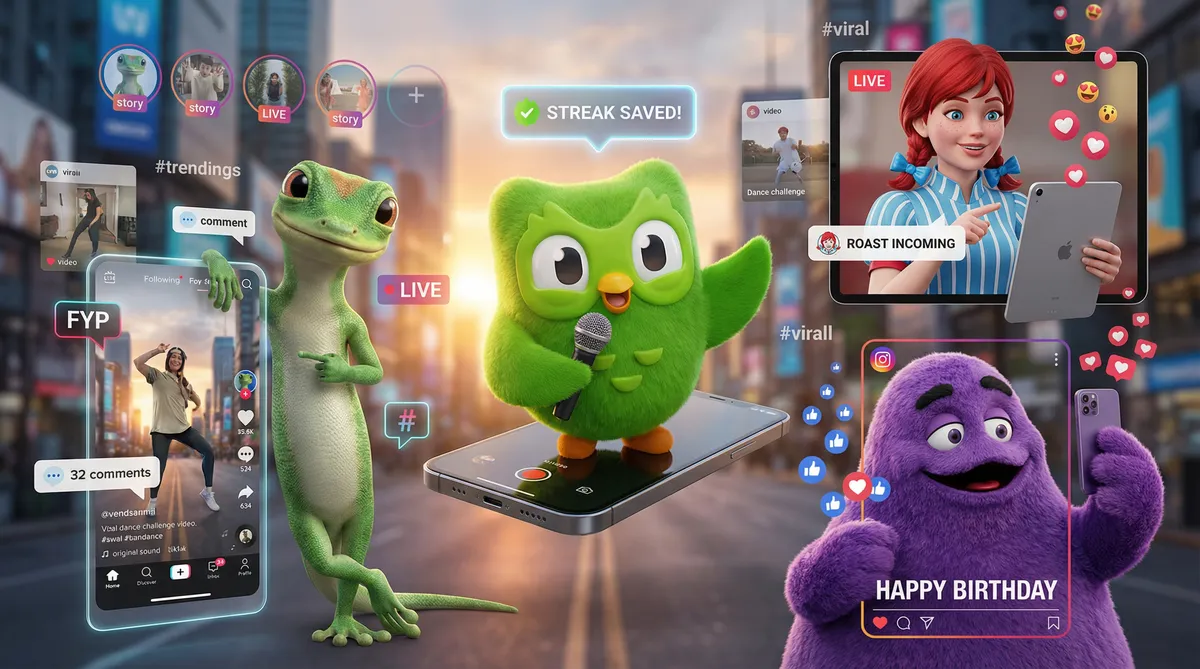


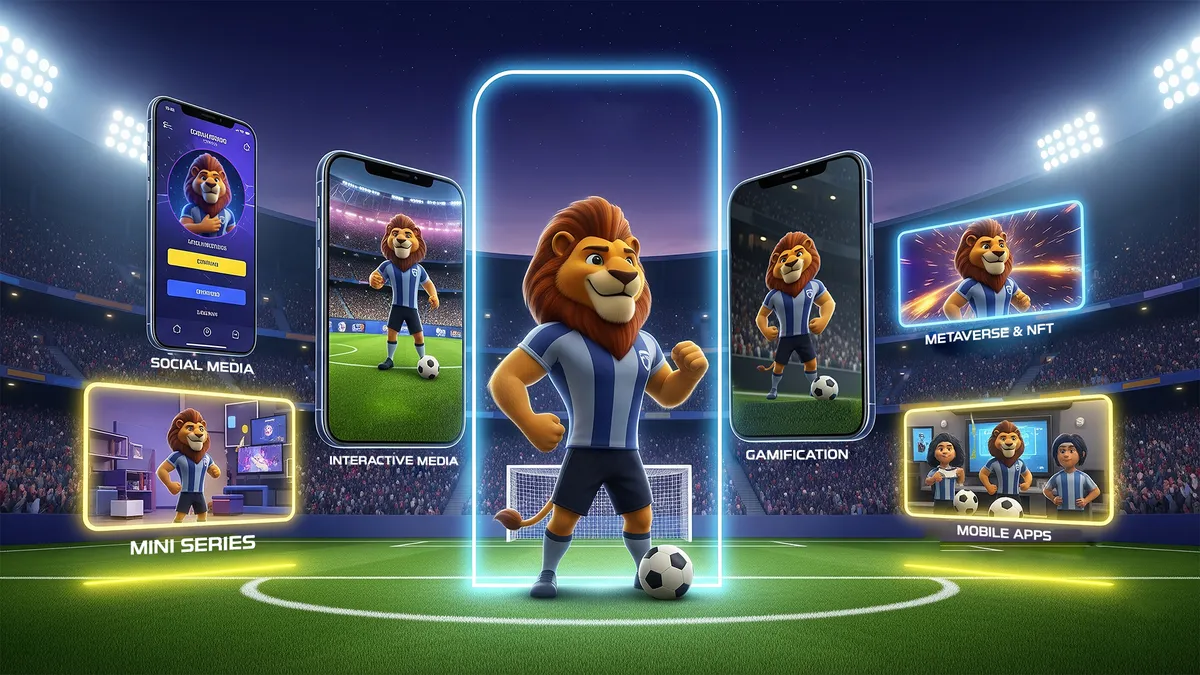
Thank you for providing such valid and expert information.
Wow! A mascot! Is easy! The Michelin Mascot Copied Fachelin Tires Mascot! Is easy!